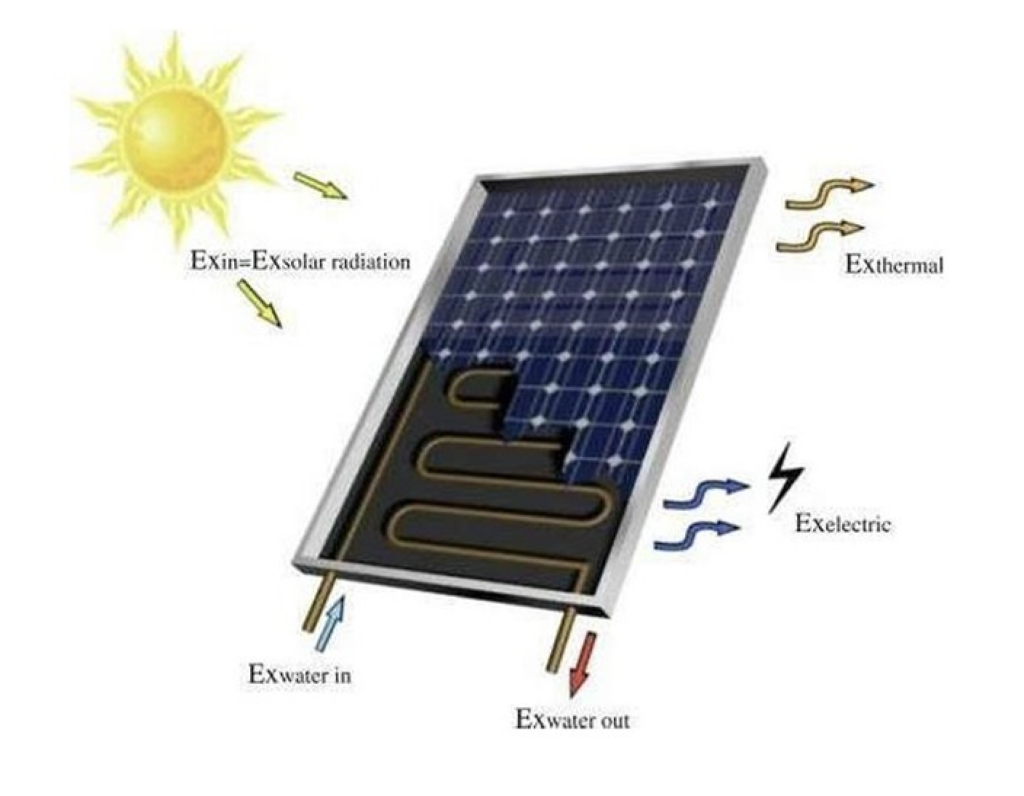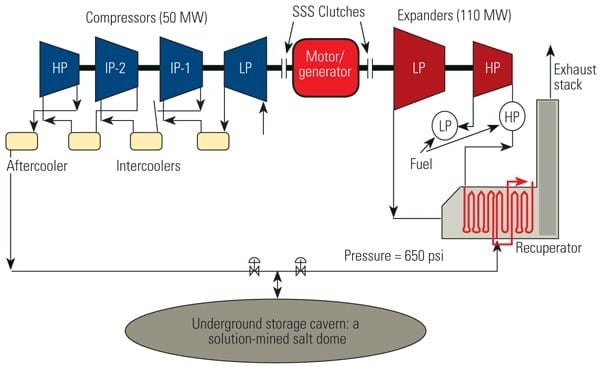Hybrid Power Solutions Market | Global Market Analysis Report – 2035 – Fact.MR

Hybrid Power Solutions Market: A Catalyst for Achieving Sustainable Development Goals
Executive Summary and Market Outlook
The global hybrid power solutions market is projected to experience substantial growth, expanding from USD 2.91 billion in 2025 to USD 7.63 billion by 2035, reflecting a compound annual growth rate (CAGR) of 10.1%. This expansion is fundamentally driven by the global imperative to achieve the Sustainable Development Goals (SDGs). The market’s trajectory is directly aligned with efforts to advance SDG 7 (Affordable and Clean Energy) by increasing energy access in off-grid and remote locations. Furthermore, it supports SDG 9 (Industry, Innovation, and Infrastructure) by providing reliable power for expanding telecommunication networks and other critical infrastructure, and contributes to SDG 13 (Climate Action) through the integration of renewable energy sources.
Market Dynamics and Alignment with Global Sustainability Targets
Primary Drivers Advancing the SDGs
- Expanding Energy Access (SDG 7): The primary driver is the increasing demand for reliable electricity in off-grid areas. Hybrid solutions provide a viable pathway to electrify remote communities, commercial enterprises, and essential services, directly contributing to universal energy access.
- Building Resilient Infrastructure (SDG 9): Growth in telecommunication networks, particularly 5G infrastructure, in remote regions necessitates dependable power sources. Hybrid systems ensure the operational continuity of this critical infrastructure, fostering connectivity and innovation.
- Promoting Climate Action (SDG 13): A global shift towards decarbonization and stringent emission reduction targets are accelerating the adoption of hybrid systems. By integrating solar and wind power, these solutions reduce reliance on diesel generators, lowering greenhouse gas emissions.
- Enhancing Economic Viability (SDG 8): Volatility in fossil fuel prices and the operational costs associated with standalone diesel generators make hybrid solutions an economically sustainable alternative, promoting stable economic activity in remote industrial and commercial applications.
Market Restraints and Challenges to SDG Attainment
- High Initial Capital Investment: The significant upfront cost of hybrid systems can be a barrier, particularly in capital-constrained emerging markets, potentially slowing the pace of achieving universal energy access under SDG 7.
- Technical Complexity and Maintenance: The integration and maintenance of multi-source power systems require specialized technical expertise, which can be scarce in remote locations, posing a challenge to long-term operational sustainability.
Segmental Analysis: Contributions to Sustainable Development
System Type: A Transition Towards Cleaner Energy
The market is segmented by system type, each representing a step towards achieving greater sustainability and energy resilience, in line with SDG 7 and SDG 13.
- Solar-Diesel Systems (36.4% Market Share): This dominant segment serves as a crucial transitional technology. It significantly reduces diesel consumption and emissions compared to traditional generators, offering a reliable and more sustainable power source for off-grid commercial (SDG 8) and telecommunication (SDG 9) applications.
- Wind-Diesel Systems (29.8% Market Share): Essential in coastal and high-wind regions, these systems provide a consistent renewable energy source, supporting resilient infrastructure and contributing to the clean energy mix.
- Solar-Wind-Diesel Systems (20.1% Market Share): Representing a more advanced stage of renewable integration, these multi-source systems maximize clean energy use and enhance energy security, directly aligning with the goals of SDG 7 and SDG 13 for complex applications in island communities and industrial facilities.
Power Rating: Tailoring Solutions for Sustainable Applications
- 11 kW-100 kW (57% Market Share): This leading segment powers commercial and mid-scale industrial applications, fostering local economic growth (SDG 8) and building sustainable communities (SDG 11) without requiring large-scale grid infrastructure.
- Above 100 kW (26% Market Share): Deployed in large industrial facilities, mining operations, and for community power, these systems are critical for powering sustainable industrialization (SDG 9) and creating resilient, self-sufficient communities (SDG 11).
- Up to 10 kW (17% Market Share): These systems are vital for residential off-grid housing and rural electrification programs, directly addressing the core objective of SDG 7 to ensure affordable and clean energy for all.
End-Use: Powering Sustainable Infrastructure and Commerce
- Commercial Applications (38.6% Market Share): Businesses utilize hybrid solutions to ensure operational continuity, reduce energy costs, and meet sustainability mandates, contributing to decent work and economic growth (SDG 8).
- Telecommunication (33.7% Market Share): This sector’s reliance on hybrid power is fundamental to building the resilient digital infrastructure (SDG 9) needed for global connectivity and information access.
Regional Analysis: Global Progress Towards the SDGs
Asia Pacific: Leading Growth through Electrification and Infrastructure Development
The Asia Pacific region is projected to be the fastest-growing market (10.2% CAGR), driven by large-scale rural electrification programs (SDG 7) and rapid telecommunication infrastructure expansion (SDG 9). Countries like India (11.0% CAGR) and China (10.4% CAGR) are at the forefront, using hybrid solutions to power economic development and connect remote populations.
North America: Focusing on Resilience and Grid Independence
Growth in North America (10.5% CAGR) is propelled by the adoption of microgrids to enhance energy resilience in the face of extreme weather events, directly supporting SDG 11 (Sustainable Cities and Communities). The USA (10.4% CAGR) leads in deploying these systems for commercial facilities and critical infrastructure.
Middle East & Africa: Harnessing Renewables for Diversification
This region shows strong growth momentum, with countries like Saudi Arabia (11.2% CAGR) leveraging abundant solar resources to diversify their energy mix and power new infrastructure projects, aligning with national visions and global climate goals (SDG 13).
Competitive Landscape and Stakeholder Imperatives for Sustainable Impact
Market Structure
The market is moderately consolidated, with key players like Siemens Energy (12% share), MITSUBISHI HEAVY INDUSTRIES, and ZTE Corporation leading through extensive engineering expertise and global service networks. Competition centers on system integration capabilities, reliability, and the ability to deliver turnkey solutions that advance customers’ sustainability objectives.
Strategic Imperatives for Aligning with the SDGs
- Deliver Integrated Energy Solutions: Stakeholders must offer holistic systems that combine renewable generation, battery storage, and intelligent load management. This approach is essential for maximizing renewable energy penetration and ensuring reliable power, directly supporting SDG 7.
- Ensure Regulatory and Climate Compliance: Provide solutions with transparent performance monitoring and emission compliance documentation to help end-users meet renewable energy mandates and contribute to national climate targets under SDG 13.
- Prioritize Reliability for Resilient Infrastructure: A “reliability-by-design” approach is critical for applications like telecommunications and remote healthcare facilities, ensuring the resilience of essential infrastructure as outlined in SDG 9.
- Focus on Service to Ensure Equitable Access: Expanding installation and maintenance networks into underserved remote territories is crucial for ensuring the long-term success of electrification projects and promoting equitable access to clean energy (SDG 7).
Analysis of Sustainable Development Goals in the Hybrid Power Solutions Market
1. Which SDGs are addressed or connected to the issues highlighted in the article?
- SDG 7: Affordable and Clean Energy: The article’s central theme is the growth of hybrid power solutions that integrate renewable energy sources like solar and wind. It directly addresses the need for clean, reliable, and affordable energy, especially in “off-grid locations” and for “rural electrification programs.”
- SDG 9: Industry, Innovation, and Infrastructure: The text emphasizes the role of hybrid power in supporting critical infrastructure, such as “expanding telecommunication infrastructure across remote regions,” “large industrial facilities,” and “mining operations.” The innovation aspect is highlighted through discussions on “advanced power electronics,” “intelligent load management,” and “battery storage integration.”
- SDG 11: Sustainable Cities and Communities: The article mentions the deployment of hybrid solutions for “island communities” and the development of “microgrid” and “community energy systems.” This contributes to making communities more resilient, self-sufficient, and sustainable by ensuring a reliable power supply.
- SDG 13: Climate Action: A key driver for the market is the need for “emission reduction capabilities” and the “decarbonization of remote power generation.” The article explicitly links market growth to “renewable energy mandates & emission reduction targets,” directly aligning with efforts to combat climate change.
2. What specific targets under those SDGs can be identified based on the article’s content?
-
SDG 7: Affordable and Clean Energy
- Target 7.1: Ensure universal access to affordable, reliable and modern energy services. The article supports this target by focusing on solutions for “off-grid locations,” “remote regions,” and “rural electrification programs,” which are key to expanding energy access to underserved populations.
- Target 7.2: Increase substantially the share of renewable energy in the global energy mix. The entire article is a testament to this target. It details the market share and growth of systems combining renewable sources (solar, wind) with diesel, noting a trend toward “higher renewable penetration” and the growth of “multi-source systems” for “renewable optimization.”
-
SDG 9: Industry, Innovation, and Infrastructure
- Target 9.1: Develop quality, reliable, sustainable and resilient infrastructure. The article highlights how hybrid power solutions provide a reliable power supply, which is essential for the functioning of telecommunication networks (“network towers”), commercial facilities, and industrial operations, thereby enhancing infrastructure resilience.
- Target 9.4: Upgrade infrastructure and retrofit industries to make them sustainable. The shift from standalone diesel generators to hybrid systems with “superior fuel efficiency, emission reduction capabilities, and operational cost savings” is a direct example of upgrading infrastructure with cleaner and more efficient technology.
-
SDG 11: Sustainable Cities and Communities
- Target 11.b: Substantially increase the number of cities and human settlements adopting and implementing integrated policies and plans towards…mitigation and adaptation to climate change, resilience to disasters. The article’s discussion of “microgrid development & community energy systems” for “grid independence, resilience” directly contributes to this target by creating localized, resilient energy infrastructure for communities.
-
SDG 13: Climate Action
- Target 13.2: Integrate climate change measures into national policies, strategies and planning. The article identifies “Renewable energy mandates & emission reduction targets” as a primary driver of the market. This shows that national policies are directly influencing the adoption of cleaner energy technologies like hybrid power solutions.
3. Are there any indicators mentioned or implied in the article that can be used to measure progress towards the identified targets?
-
For Target 7.1 (Universal Energy Access)
- Implied Indicator: The expansion of hybrid power systems in specific regions and applications. The article notes that the Asia Pacific region’s growth is driven by “rural electrification priorities” and that systems are deployed for “small-scale off-grid housing.” Tracking the number of installations in these areas would measure progress.
-
For Target 7.2 (Increase Renewable Energy Share)
- Mentioned Indicator: The market share of different hybrid system types. The article provides precise figures, such as “Solar-diesel systems hold a 36.4% share” and “Wind-diesel configurations represent 29.8%.” The projected growth of “multi-source systems” to “24-28%” also serves as a forward-looking indicator.
- Mentioned Indicator: Reduction in fossil fuel consumption. The article states that hybrid systems enable “40-60% diesel consumption reduction,” a quantifiable measure of the displacement of fossil fuels with renewable energy.
-
For Target 9.1 (Resilient Infrastructure)
- Mentioned Indicator: The market share of hybrid solutions by end-use. The article quantifies this with data like “Telecommunication captures 33.7% end-use share” and “Commercial applications establish end-use leadership… with a 38.6% share.” Growth in these segments indicates an increase in reliable power for critical infrastructure.
-
For Target 13.2 (Integrate Climate Measures)
- Mentioned Indicator: The market’s Compound Annual Growth Rate (CAGR) in countries with strong climate policies. The article provides specific CAGR figures for countries like Germany (9.6%), the USA (10.4%), and China (10.4%), which have “established renewable energy frameworks” and “renewable energy mandates.” This growth rate reflects the impact of such policies.
4. Table of SDGs, Targets, and Indicators
| SDGs | Targets | Indicators Identified in the Article |
|---|---|---|
| SDG 7: Affordable and Clean Energy |
7.1: Ensure universal access to affordable, reliable and modern energy services.
7.2: Increase substantially the share of renewable energy in the global energy mix. |
– Growth of market in regions with “rural electrification priorities” (e.g., Asia Pacific). – Market share of renewable-based systems (e.g., Solar-Diesel at 36.4%). – Percentage of diesel consumption reduction (e.g., 40-60%). |
| SDG 9: Industry, Innovation, and Infrastructure |
9.1: Develop quality, reliable, sustainable and resilient infrastructure.
9.4: Upgrade infrastructure and retrofit industries to make them sustainable. |
– Market share by end-use for critical infrastructure (e.g., Telecommunication at 33.7%, Commercial at 38.6%). – Adoption rate of hybrid systems over traditional diesel generators, driven by “emission reduction capabilities.” |
| SDG 11: Sustainable Cities and Communities | 11.b: Increase adoption of integrated policies for climate change mitigation, adaptation, and resilience. | – Growth of “microgrid development” and “community energy systems” for “grid independence, resilience.” |
| SDG 13: Climate Action | 13.2: Integrate climate change measures into national policies, strategies and planning. | – Market growth (CAGR) in countries with “Renewable energy mandates & emission reduction targets” (e.g., USA at 10.4%, Germany at 9.6%). |
Source: factmr.com
What is Your Reaction?
 Like
0
Like
0
 Dislike
0
Dislike
0
 Love
0
Love
0
 Funny
0
Funny
0
 Angry
0
Angry
0
 Sad
0
Sad
0
 Wow
0
Wow
0
















































:focal(1500,1000)/https://media.globalcitizen.org/a6/9a/a69a4720-d8a1-4715-b596-18738d03c05c/rotary_polio_hero_image.jpg?#)







/countries/sri-lanka/photo-credit---dmc-sri-lanka.tmb-1200v.jpg?sfvrsn=dc298bcc_1#)



















